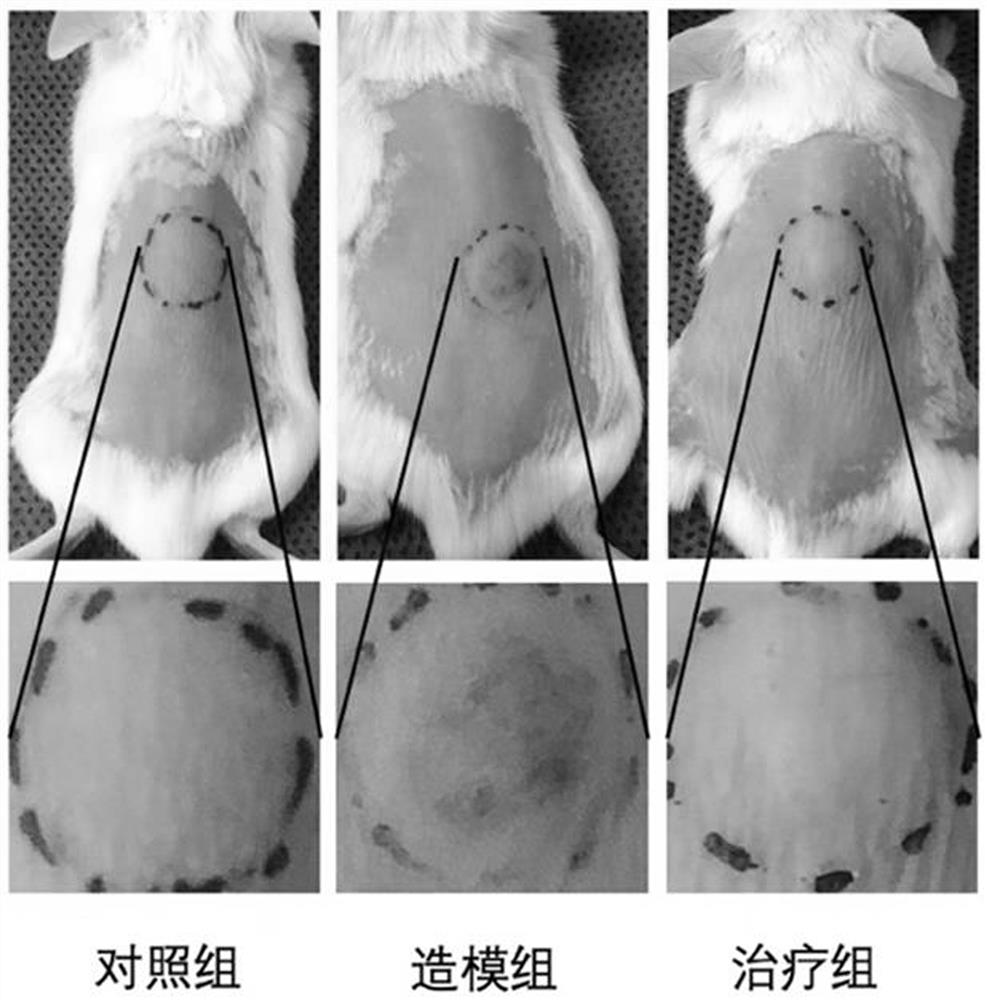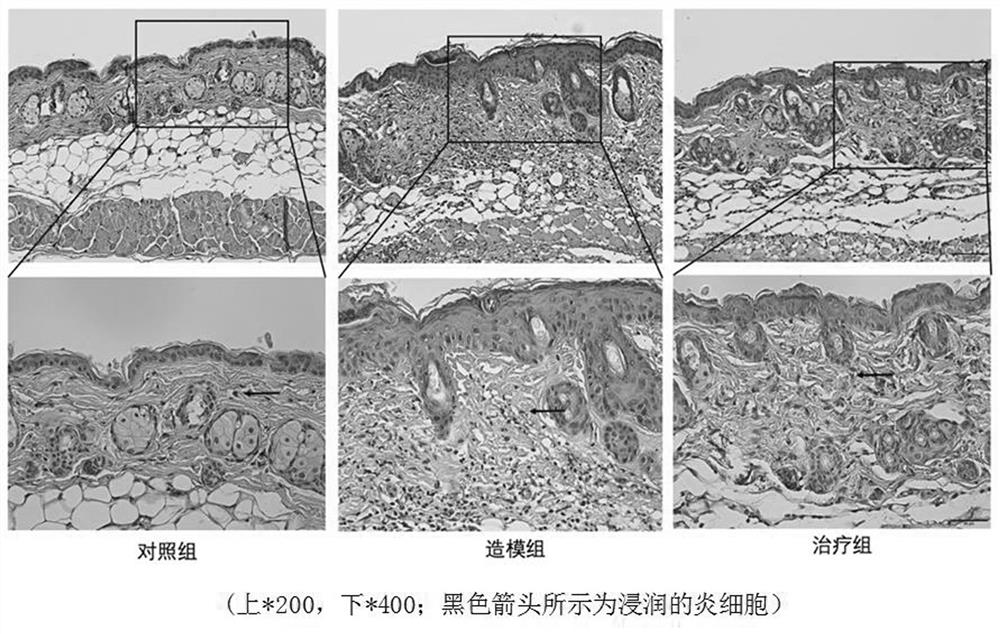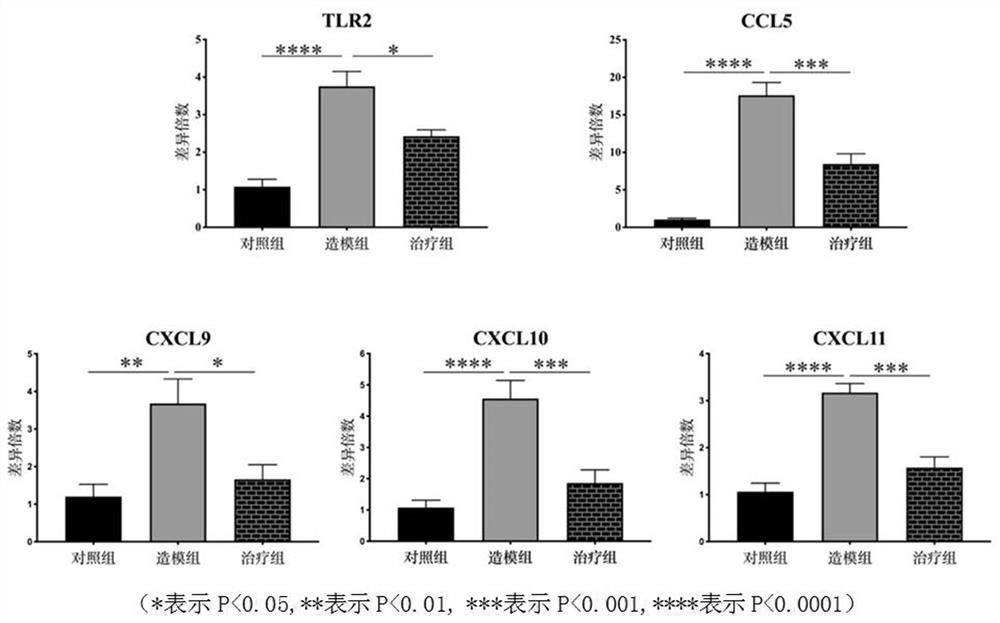Chemotactic factor as molecular marker for diagnosing rosacea
A chemokine, rosacea technology, applied in the field of biomedicine, can solve problems such as unclear rosacea
- Summary
- Abstract
- Description
- Claims
- Application Information
AI Technical Summary
Problems solved by technology
Method used
Image
Examples
Embodiment 1
[0027] Embodiment 1 mouse experiment.
[0028] Female Balb / c mice aged 6-8 weeks were selected and randomly divided into a control group, a model group and a treatment group. The control group received no treatment, and the model group was subcutaneously injected with 40 μL LL-37 (320 μM) on the back to create animal models of rosacea, 12 hours each time, a total of 4 times; the treatment group was stimulated with 0.5% AhR 30 minutes after the second injection of LL-37. Benvimod treatment was given for 3 consecutive days; photographs were taken 24 hours after the last dose to evaluate the erythema. The changes under the microscope were observed by HE staining, and the levels of TLR2 and chemokines CCL5, CXCL9, CXCL10, and CXCL11 were detected by qRT-PCR.
[0029] 1. Erythema scoring method: Score 1-5 according to the severity of erythema (5 is the highest); use Image J software to measure the erythema area of skin lesions taken in digital photos, and conduct quantitative an...
Embodiment 2
[0069] Example 2 Cell experiment.
[0070] Add LL-37 to HaCaT cells to create a rosacea cell model, and then add the AhR agonist Benvimod to treat it. The levels of TLR2 and chemokines CCL5, CXCL9, CXCL10 and CXCL11 were detected by qRT-PCR and Western Blot / ELISA; the levels of chemokines CCL5, CXCL9, CXCL10 and CXCL11 were detected by lentivirus transfection to overexpress TLR2.
[0071] 1. Cell culture:
[0072] HaCaT cells were cultured in DMEM medium containing 10% FBS and 1% penicillin and streptomycin, and placed in 5% CO 2 in a 37 °C humidified incubator. Replace the culture medium once every 1-2 days, observe the growth of the cells under a microscope, and pass the cells when the coverage rate reaches 80-90%. To operate in the cell cleaning workbench, first use a pipette to aspirate the liquid in the bottle / dish, and wash the cells with 2 mL of sterile PBS for a total of 2 washes. Then add trypsin 1-2mL to the culture flask, 37°C, 5% CO 2 Incubate in the incubator...
PUM
 Login to View More
Login to View More Abstract
Description
Claims
Application Information
 Login to View More
Login to View More - R&D
- Intellectual Property
- Life Sciences
- Materials
- Tech Scout
- Unparalleled Data Quality
- Higher Quality Content
- 60% Fewer Hallucinations
Browse by: Latest US Patents, China's latest patents, Technical Efficacy Thesaurus, Application Domain, Technology Topic, Popular Technical Reports.
© 2025 PatSnap. All rights reserved.Legal|Privacy policy|Modern Slavery Act Transparency Statement|Sitemap|About US| Contact US: help@patsnap.com



